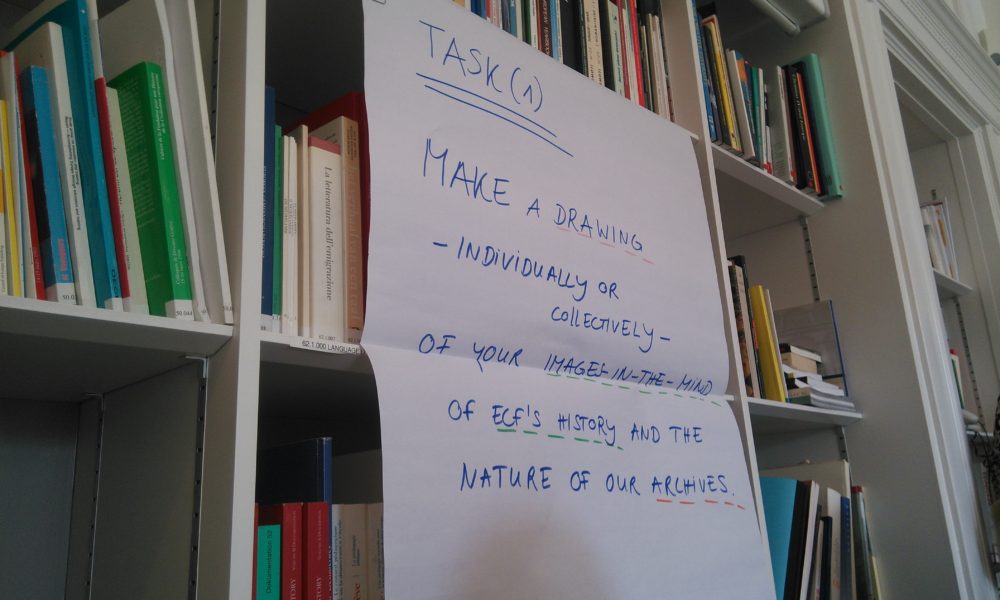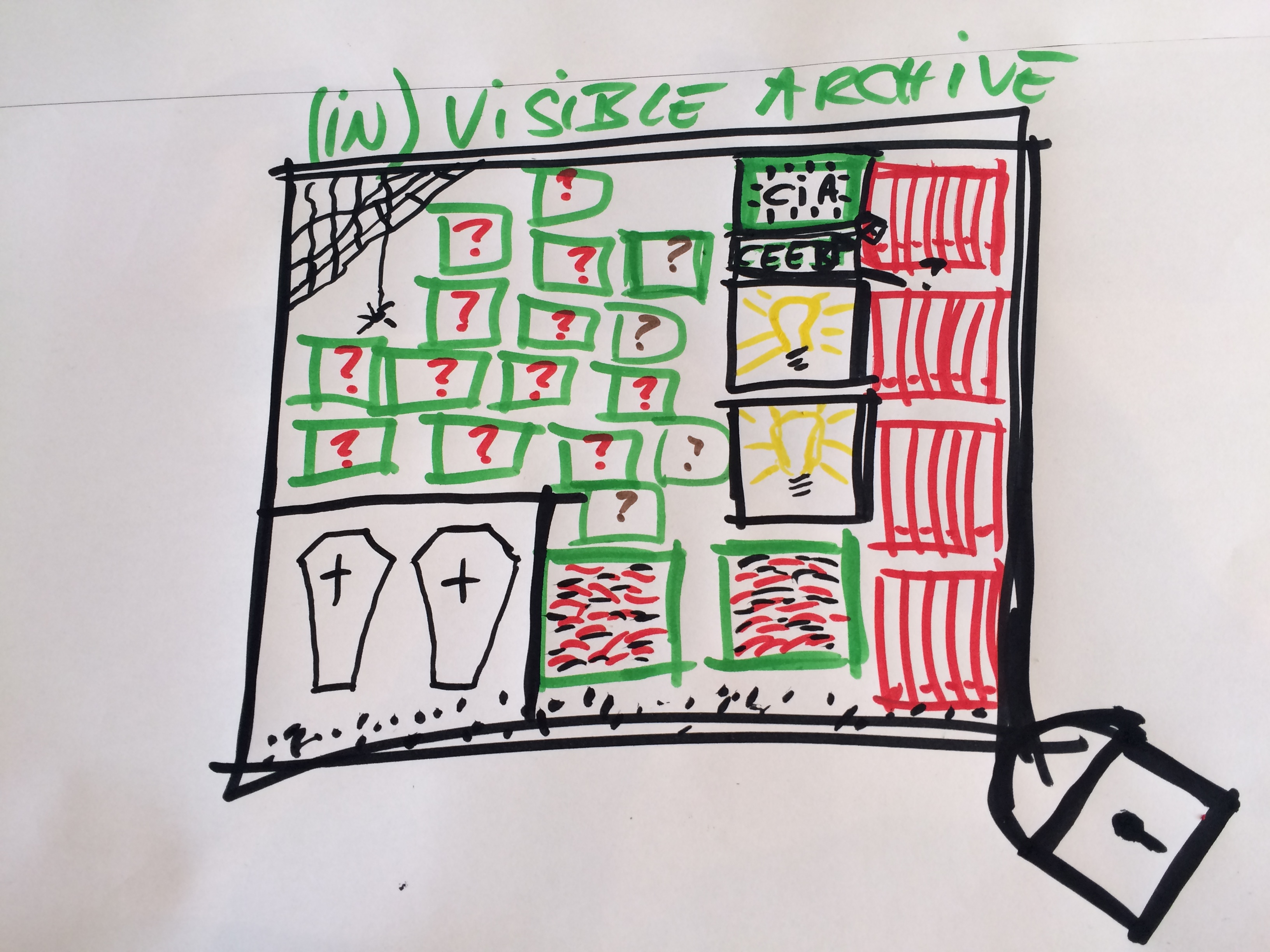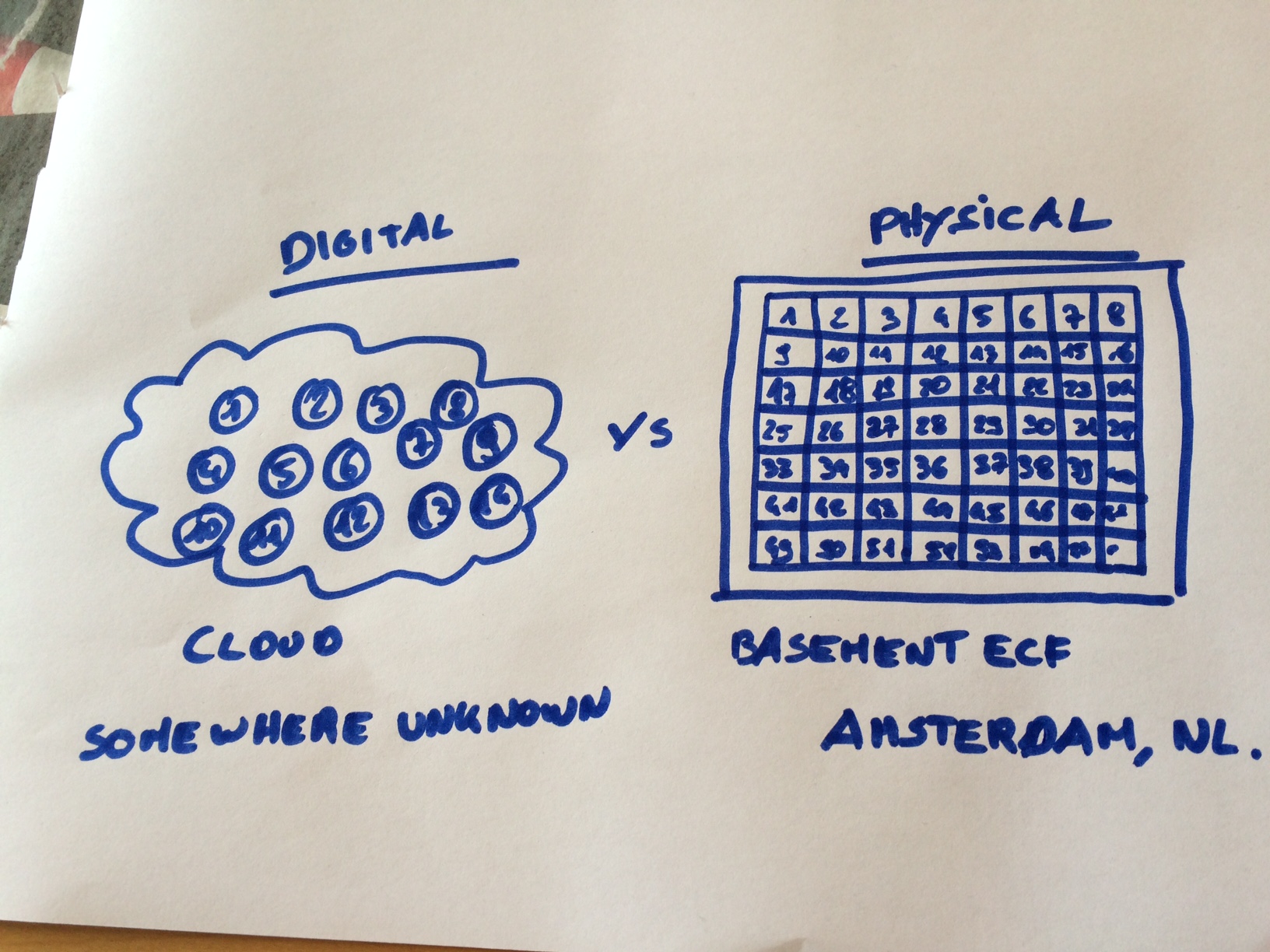
What’s our archive got to do with me? The challenges of collective reflection
Susanne Mors from the European Cultural Foundation asks the question what is the archive in the mind as an interesting parallel to TIHR’s own archive as organisational development.
Inspired by a meeting with Juliet Scott and Hannah Walsh of the Tavistock Institute of Human Relations last February, where we shared some of the stories and challenges related to working through our respective archives, my colleague Lise Mathol and I decided to set up an unconventional staff intervention – at least in our work context: drawing our archive-in-the-mind together with our colleagues.
Lise and I both work at the European Cultural Foundation (ECF) in Amsterdam. Our positions don’t necessarily involve working on our archive, other than making sure our work is well-documented, accessible and transparent. However, neither of us can ignore the feeling that we are sitting on gold dust when it comes to our history (or are we, really?) and that we somehow have to do something about working through our past.
Like the Tavistock Institute, ECF is a knowledge organisation with a history that started just after World War II. Our mission is to make a tangible impact on civil society, citizen initiatives, public opinion and policy proposals to combat the fragmenting forces jeopardising peace and social progress in Europe. Like the Tavistock Institute, we existed long before the rise of internet technology. Until the late 1990s, our archives consisted of piles of paper, followed by digital accounts and all kinds of web-based tools.
We work with a range of partners across Europe and beyond, and we seem to be proud of our achievements over the years. But… we also seem to forget, and things we did more than five years ago can appear to be light years away. Apparently there were some attempts to reflect on our history, mostly by people outside the organisation, but somehow this work never made it to the public domain.
So, after the meeting with Juliet and Hannah, we realised that there must be more to it than ‘simply’ not having a mandate, or a plan, or time and money to look at our past. Perhaps looking at it from a systemic perspective could help? Exploring what we hold in our minds collectively seemed a good way forward, and we planned a Lunch & Learn gathering with all of our staff to begin the process of working through our past.
Making a start
After a short introduction by Lise, we set ECF staff two different tasks:
Task # 1: Make a drawing – individually or collectively – of your images-in-the-mind of ECF’s history and the nature of our archives.
Task # 2: Collectively reflect on – and associate with – what we see on the drawing(s) to further our understanding of how we relate to our past.
This initial meeting resulted in 17 drawings for us all to reflect on. These can be clustered according to three different themes: Dealing with skeletons in the closet, Physical vs. digital: finding the right home, and To curate or not: that is the question.
Dealing with skeletons in the closet
While the whole session wasn’t overly emotional, the one theme that caused a little distress was about the darker aspects of our past. For example, how integral were some of our key figures and donors from the past, and what was our role in the context of the Cold War – when we were financed by certain parties who saw us as a counterbalance to communism?
It became clear that not many staff were too aware or even interested in those questions, while others made very clear that working on our archives only makes sense if we are committed to looking at everything, especially the more unwanted parts of our past. One colleague offered the example of how others worked through their Nazi past in order to become future-proof – a comparison that was felt to be inappropriate by others. This vignette gives a glimpse of the conversations we as an organisation would need to have once we decided to move forward with disclosing our archives.

Physical vs. digital: finding the right home
The second theme that emerged was how to work with the different forms and shapes of our archives (physical and digital) – as well as the different working methods needed for preservation and eventual presentation. Should everything be digitalised? Or should we keep in paper form everything that was meant to be on paper, as the Tavistock Institute decided to do?
Keeping one’s archive in a physical space means that you ideally want that space to be open and accessible. However, ECF does not have this kind of space ourselves and have up until now not found partners that are willing to house our archive. It seems that institutions in the Netherlands are less interested in hosting our European dimension, and we ourselves are reluctant to move the archives to an institution abroad. This possibly also touches upon the question: where is our home, or do we have one at all?

To curate or not: that is the question
The third theme to emerge was about the value – or even duty – of making our archives publicly accessible. However, whether doing so in an implicit or explicit way seems to be a choice that is yet to be made. There were voices arguing for ‘simply’ publishing it all and letting others decide what is interesting (which raises the question of how to deal with confidentiality).
Others argued that we should play a role in curating our content – that is, selecting certain aspects and making an effort to present and frame them properly. Are we also willing as a team to share the task, the assignment to take on the archive as a project that affects the whole organisation?

Looking forward to looking back?
Overall, I saw two main views emerging among ECF colleagues during the event. One was: what’s the archive got to do with me? Why do you waste my time? This was also reflected in the way the second task was tackled, which took rather the form of a feedback session than a collective reflection, leading people to inquire about our plans and next steps. The other attitude was more showing a sense of a shared responsibility, talking about “us” and “ours” – acknowledging the collective aspect of archival work.
What is also interesting is that none of our colleagues took up the suggestion of working collectively, which left me feeling a little disappointed at first and then made me think that this might be a reflection of the scattered images of our organisation’s identity that we hold in mind individually. And in fact we formulated the task in an ambiguous way, proposing to work individually or collectively, and by mentioning two things: our history and our archives (rather than their relatedness). It seemed hard to really formulate a straightforward task, and I wonder whether we unconsciously steered the group towards a certain duality, or whether we picked something up that was already there.
Looking at the duality that emerged, in the themes as well as in the way we worked as a group, what does it tell us? Overall, it seems easier to take a stance than to leave things as they are: contradictory, confusing and maybe even a little frightening.
Susanne Mors works as Senior Communications Officer at the European Cultural Foundation and as independent supervisor and consultant. She has vast experience in international project and communications management, including capacity development, grant-giving, strategic planning, corporate communications and HRM. She holds a Master’s degree in Literature and Cultural Studies from Humboldt University Berlin and is trained as systemic coach and consultant at Utrecht University.